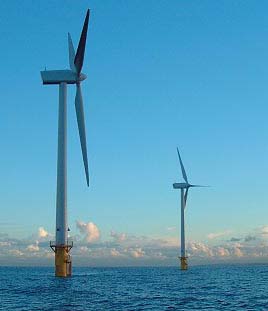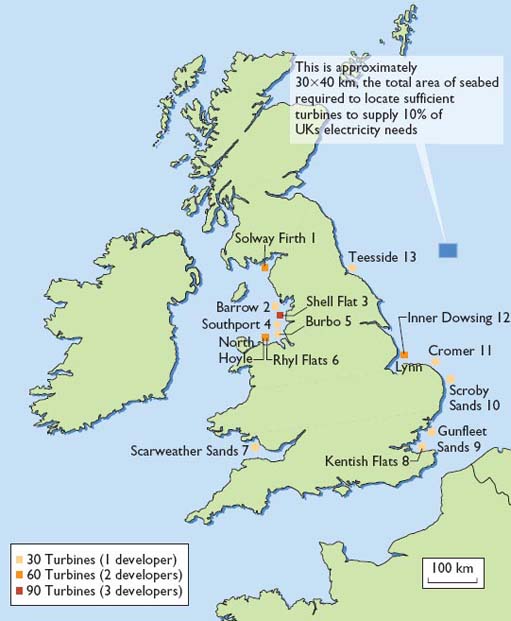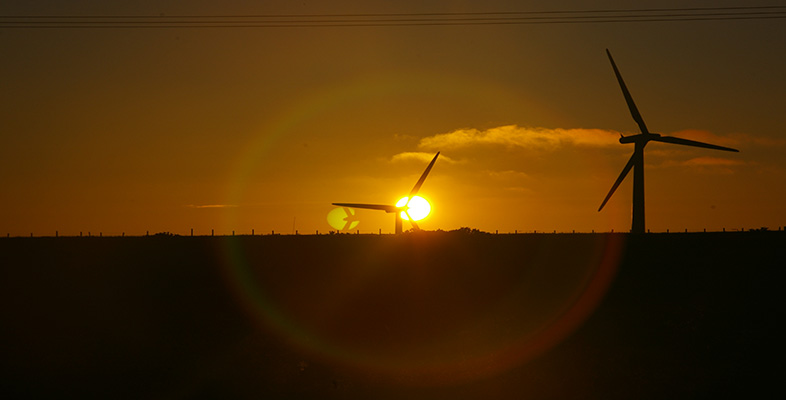4.2.1 Wind energy
When solar radiation enters the earth's atmosphere, because of the curvature of the earth it warms different regions of the atmosphere to differing extents – most at the equator and least at the poles. Since air tends to flow from warmer to cooler regions, this causes what we call winds, and it is these air flows that are harnessed in windmills and wind turbines to produce power.
Wind power, in the form of traditional windmills used for grinding corn or pumping water, has been in use for centuries. But in the second half of the twentieth century, and particularly in the past few decades, the use of modern wind turbines for electricity generation has been growing very rapidly. Installed wind generating capacity has doubled every two and a half years since 1991, and at the end of 2001 the world total was over 23,000 MW. (Windpower Monthly, 2002) Denmark derives more than 15% of its electricity from wind, and in other countries such as Germany, Spain and the United States of America turbines have in recent years been installed at a rate of more than a thousand megawatts per year.
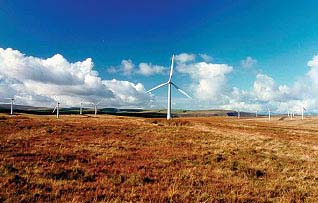
At present, most of these turbines have been installed on land. But several countries have ambitious plans to install thousands of wind turbines offshore. Denmark, for example, has three offshore wind farms and plans many more, as part of its aim of deriving 30 per cent of its electricity from wind by 2020 – though these plans are subject to future political approval.
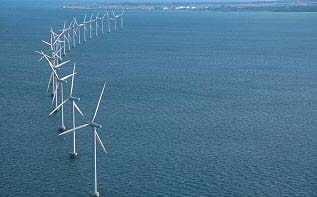
The UK, too, has ambitious offshore wind power proposals. Britain's first two offshore wind turbines were installed off Blyth harbour in Northumberland in 2000, and sites have been identified for 13 offshore wind farms that could be built in the coming decade. These would have a total installed capacity of 1600 MW.
